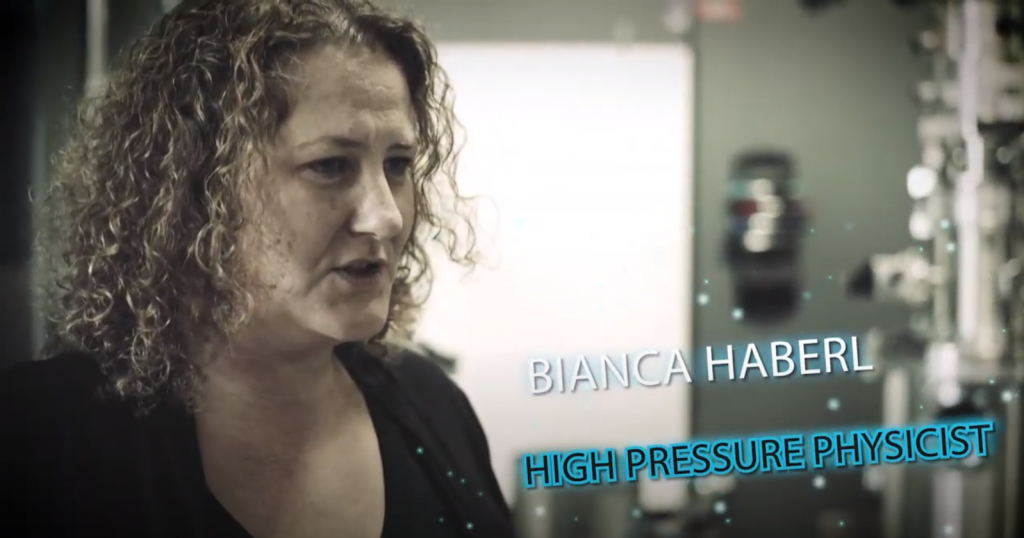February 6, 2017

Scientific research can be vexing and tiring at times, but for Bianca Haberl, the euphoria of discovery is the ultimate reward.
In fact, Haberl can identify the specific instance, early in her career, when that excitement originated and guided her toward high pressure science. It was her first time working on a synchrotron, studying the phase transitions and structural changes of silicon under high pressure. Her team had been awake for two days straight with little success, until the early pre-dawn hours when one of their samples started to change.
“All of a sudden, these bits of silicon started popping up, essentially we saw ‘bubbles’ of metallic silicon appear. We could actually see, with our eyes, the phase transition happening before us,” Haberl said.
The thrill of that breakthrough more than made up for the frustration and the sleepless nights, and ever since, she said, she’s been completely hooked.
“You literally jump up in the middle of the night, dancing through the room because you’ve gone a step further and have seen something that no one else has seen before,” Haberl said. “No matter how tired you are, no matter how hard the work was, the moment it clicks is fantastic. It’s all worth it.”
Haberl, a researcher at the Department of Energy’s Oak Ridge National Laboratory, is a Weinberg Fellow and the high pressure science coordinator in the Neutron Sciences Directorate’s Advanced Diffraction Group. Her research focuses on compressing and transforming silicon and related elements into new materials and studying the transformed structures with neutron scattering at the Spallation Neutron Source, a DOE Office of Science User Facility.
Science has been a lifelong pursuit for Haberl. Before she was even five years old, she knew she wanted to be a researcher.
Read more at ornl.gov/news.